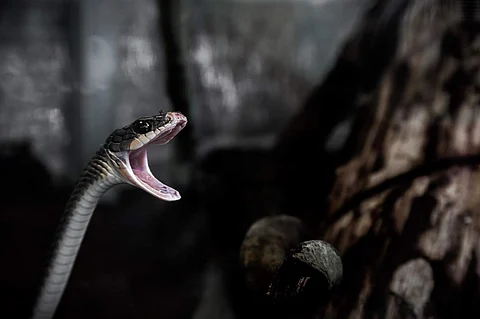

NEW DELHI: As India contributes to nearly 50 per cent of global snakebite deaths and is considered the snakebite capital of the world, a scientific task force is conducting a study that will provide evidence-based inputs to the government on developing national strategies to reduce the burden as well as revising the national snakebite treatment.
The Indian Council of Medical Research (ICMR)-National Institute for Research in Reproductive and Child Health (NIRRH) study findings will also help India to meet the World Health Organisation (WHO) deadline of 2030 to reduce death and disability from snakebite by 50 per cent.
“The results of the ICMR task force study could be useful for upscaling to other Indian states, South Asia and other tropical countries,” said Dr Rahul K. Gajbhiye, Scientist D and DBT Wellcome India Alliance, clinical and public health intermediate Fellow, Head Clinical Research Department ICMR-NIRRH. The findings will “provide critical regional inputs for the revision of the National Snakebite Treatment protocol,” which is not followed due to a lack of awareness and training.
The two-year cross-sectional, multi-centric study is being carried out in the Shahapur and Aheri blocks of Maharashtra and the Khordha and Kashipur blocks of Odisha. Snakebite Envenoming (SBE) leads to around 81,410 to 137,880 deaths, from 1.8 million to 2.7 million cases globally.
SBE affects about 400,000 people annually, causing permanent physical or psychological disabilities, including blindness, amputation, and post-traumatic stress disorder. The genesis of the snakebite project was Dr Gajbhiye’s experience and learnings from Dahanu, Maharashtra, where the SBE fatality rate was as high as 4.5 per cent. “SBE is labelled as a disease of poverty. Agricultural and migrant workers, tribes, hunters and often, the earning members of the family are the victims. So, SBE is not only a public health problem but also a major socio-economic determinant in India,” he told this newspaper.
The recent national mortality survey estimated that India had 1.2 million snakebite deaths (an average of 58,000 per year) from 2000 to 2019, an increase of about 8,000 cases per year compared to the earlier estimated survey (2001–2003). The main concern is that SBE is not a notified disease, and cases are grossly underreported, as most of the deaths occur in rural areas. States like Madhya Pradesh, Odisha, Uttar Pradesh, Bihar, Jharkhand, Rajasthan, Gujarat, Andhra Pradesh, and Telangana share the burden of about 70 per cent of snakebite deaths from 2001 to 2014.
From 2003 to 2015, a study estimated about 154,000 snakebite deaths in private and public hospitals. However, the government reported only 15,500 hospital deaths indicating that only about 10 per cent of the expected deaths were recorded.